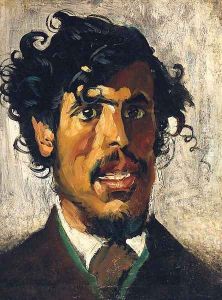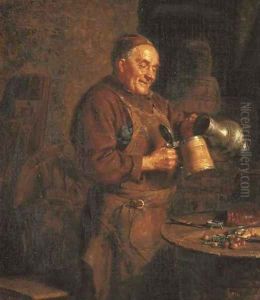Eduard Von Gruttzner Paintings
Eduard Theodor Ritter von Grützner, born on May 26, 1846, in Groß-Karlowitz (now Karłowice Wielkie, Poland), was a renowned German painter and professor, particularly celebrated for his genre paintings of monks. He was born to a family of Prussian nobility and showed an early inclination towards the arts. Pursuing his passion, he studied painting at the Academy of Fine Arts in Munich under the tutelage of Hermann Anschütz, a well-respected German painter, and Alexander Strähuber, an illustrator and painter. Later, Wilhelm von Diez, who was a genre painter and illustrator, heavily influenced Grützner's painting style.
Grützner established himself in Munich, which during the 19th century was a thriving artistic hub. He gained fame for his masterful depiction of monks engaged in various activities, often involving humor and the enjoyment of food and drink. His works are characterized by their fine detail, rich color palette, and the joyful character of their subjects. Grützner's monks are typically portrayed as jovial and hearty, frequently surrounded by the trappings of monastic life. These paintings resonated with the public and collectors, contributing to his popularity.
In addition to his genre paintings, Grützner also painted historical scenes and portraits. He exhibited his works at numerous exhibitions and was well-received by critics and the public alike. His success as an artist led him to become a professor at the Munich Academy in 1886, and in 1888, he was ennobled by Prince Regent Luitpold of Bavaria, which allowed him to add 'Ritter von' to his name.
Grützner's artistic legacy includes a significant body of work that provides a glimpse into the humorous and human aspects of monastic life. Despite changing art trends, his paintings have maintained a degree of popularity, particularly among those who appreciate the genre painting tradition of the 19th century. Eduard von Grützner died on April 2, 1925, in Munich, leaving behind a legacy that continues to be celebrated by art historians and collectors.

